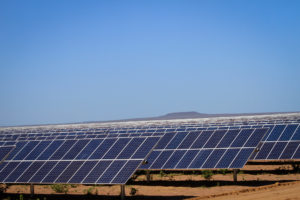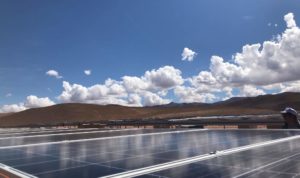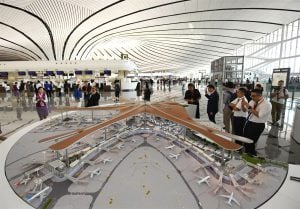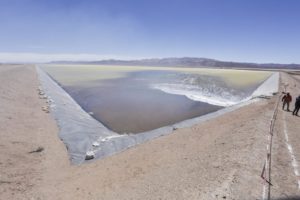Residents of the Verde Para Sempre extractivist reserve in the Brazilian Amazon protested as loudly as they could about the Tucuruí transmission line.
The enormous project, in part built by Chinese companies, connects the Belo Monte hydroelectric plant to large cities, but passes right over their heads. It has brought deforestation and pollution, say residents, many of whom relied on diesel generators or lived in the dark.
Big hydro in the Amazon (installed capacity)
* Belo Monte (9,400 MW)
* Teles Pires (1,820 MW)
* Jirau (3,750 MW)
* Santo Antônio (3,568 MW)
* Tucuruí (8,535 MW)
Then, a federal government environmental compensation plan, which is linked to one of the projects, revolutionised the lives of residents by funding the installation of thousands of solar panels — many imported from China.
More than 15,000 inhabitants of the reserve, known as a Resex, have benefited from the nation’s largest project to construct and install solar panels, which began in late 2017. Over 10,000 solar panels power 2,200 households, 64 churches, 80 schools, four health clinics, and 35 community halls, according to the Brazilian Ministry of Mines and Energy.
Such projects are only possible because Chinese investment has driven down the cost of solar panels. In Brazil, the price of the technology has dropped 80% over the past ten years.
Energy contradictions
Though China’s investments enable the expansion of clean technologies at low prices, its big state-owned companies are still involved in huge infrastructure projects with inevitable environmental impacts. State Grid’s enormous Tucuruí transmission towers are a case in point.
Prior to the solar project, there were years of debate over the best energy fix for the reserve. At first, residents demanded they be connected to the transmission lines, says Angelo Mallet, chief of the Resex, located in the municipality of Porto de Moz, Pará State.
“Although the Belo Monte hydroelectric plant was so close, and the transmission lines were even located within the reservation, the residents remained in the dark,” he says.
“Having power 24 hours a day, without noise, without sound pollution, and without harming the environment is already worth all the investment.”
Solar revolution
Such projects as Verde Para Sempre are scattered throughout municipalities in the Brazilian Amazon, where 70% of the 500,000 families in the region are still not served by electricity.
Today, there are more than 2,000 solar microgeneration projects in the Amazon, according to data from the National Electricity Agency (ANEEL).
Solar panels power a malaria diagnostics laboratory and allow night classes for youths and adults in the Amanã reserve in Amazonas state. In Xingu Indigenous territory in Mato Grosso, photovoltaic systems generate renewable energy in schools, health clinics, and offices across 65 communities.
This year, artisan José Pancrace, who lives in the Anavilhanas region of Amazonas, benefitted from a project supported by the Amazonas Sustentável Foundation.

He received a solar kit just a month ago, he says. Now, for the first time in his life he can watch TV without generator background noise, drink cold water at home, and refrigerate fish to eat the following day.
“The community used to spend 360 Reais per month (US$86) to have power from 6pm to 9pm. All the revenues from the residents’ association went toward paying to run the generator,” he recalls. “Now we don’t pay a penny.”
Electricity enables small businesses to operate, and refrigerating fish reduces fishing costs, the main activity in many coastal communities in the region.
Liane Lima, scientific supervisor at Amazonas Sustentável Foundation, an NGO, says:
“The project is linked to community empowerment, community participation in creating the solution and training them to install and maintain these systems.”
Solar capacity increases
Distributed photovoltaic generators – small systems that are independent from large distribution networks – doubled in number in Brazil in just six months last year. By June 2018 they hit 100,000, according to the Brazilian Photovoltaic Solar Energy Association (ABSOLAR). Two thirds are residential.
Brazil currently ranks 11th among countries that have invested most in photovoltaic solar power in the past year (China is number one). Brazil now has 2.4GW of accumulated installed capacity nationwide but solar accounts for just 1.36%.
Returns on solar investments now come quicker. In 2012, it took consumers 10 to 12 years to reap the benefits. Today, a system with a lifecycle of 20 years can yield a return within 5 or 6, according to ABSOLAR.
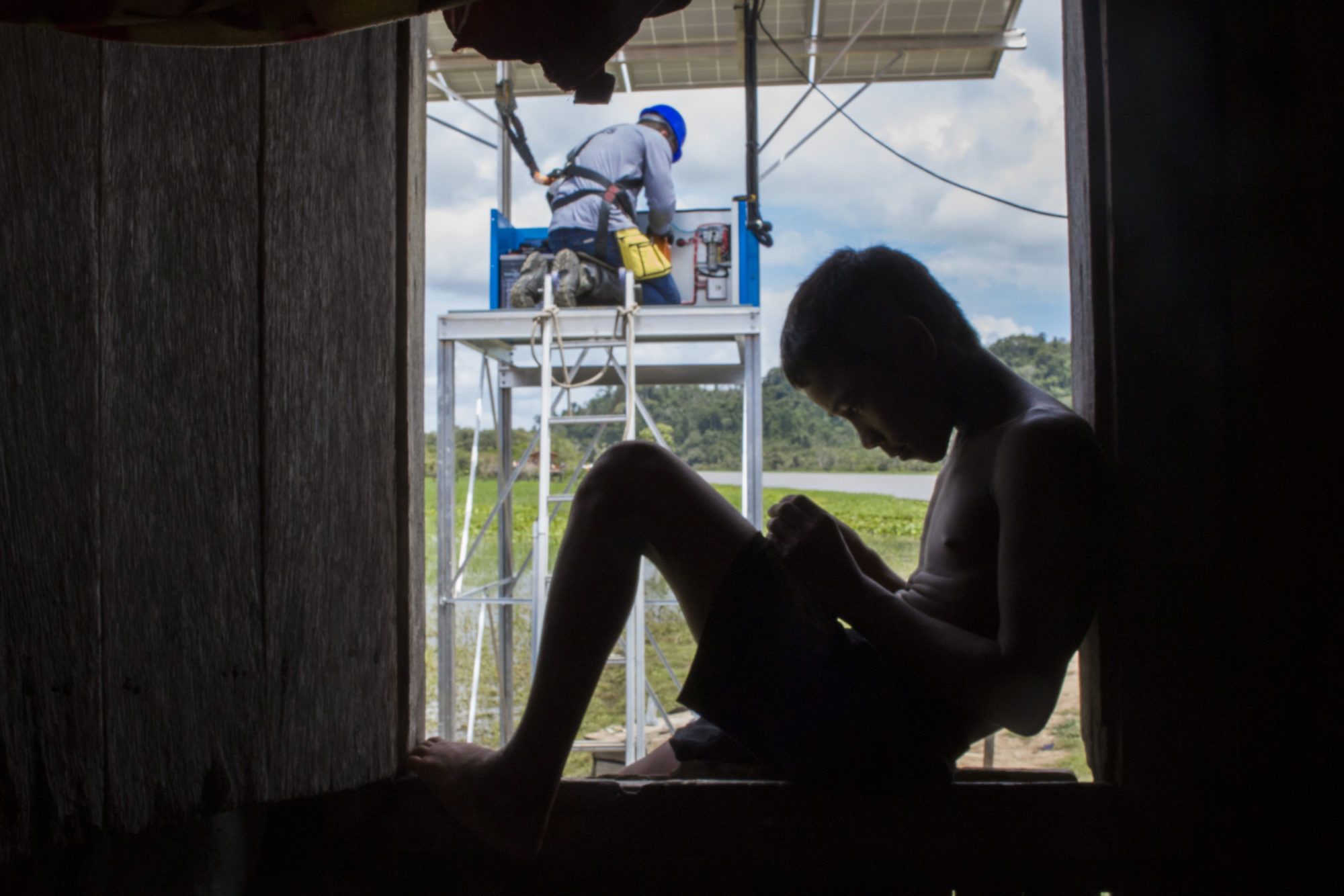
The expansion in renewable energy has generated a 32% growth in solar module imports in Brazil in the first half of this year compared to 2018. Chinese companies Jinko, BYD, JÁ Solar, Trina, and Chinese/Canadian venture Canadian Solar dominate.
On China’s heels
Expansion in photovoltaic generator models in Brazil, replacing more costly and polluting systems like diesel generators, follows a trend started by China.
Though it accounts for approximately 24% of global greenhouse gas emissions, coal-fired power is gradually being replaced by solar and wind power in China.
In April 2016, the Chinese National Energy Administration began installing solar panels in China’s poorest rural communities, aiming to benefit 2 million households.
Before solar power arrived, we had to pay dearly to get practically no electricity… I didn’t have a fridge, we preserved the food in salt to keep it to the next day
Similar investments are also being led by China in Southeast Asia. In the village of Bayar Khon in central Myanmar, for example, 350 families used to rely on charcoal and firewood for cooking but received solar panels as part of a project involving Chinese NGO Global Environment Institute and the government’s South-South Cooperation Fund for Climate Change.
David and Goliath
The project under the transmission line in Verde Para Sempre cost 62 million Reais (US$7 million), a trifling amount in comparison to the 30 billion Reais of public money absorbed by Belo Monte.
It guarantees each family 45Kw/hours, enough for lights, a radio, charging a cell phone or a laptop, watching TV, and powering a refrigerator.
These changes to the energy grid have reduced diesel and petrol use in communities by an average 12,500 litres per week and saved them money, according to the federal government.
Besides the costs, these isolated fuel-powered systems, which over 3 million mostly Amazon-dwelling Brazilians still use, emit 3 million tonnes of CO2 into the atmosphere each year, according to the Brazilian Institute of Energy and the Environment (IEMA). This is more than largest city São Paulo’s entire fleet of cars.
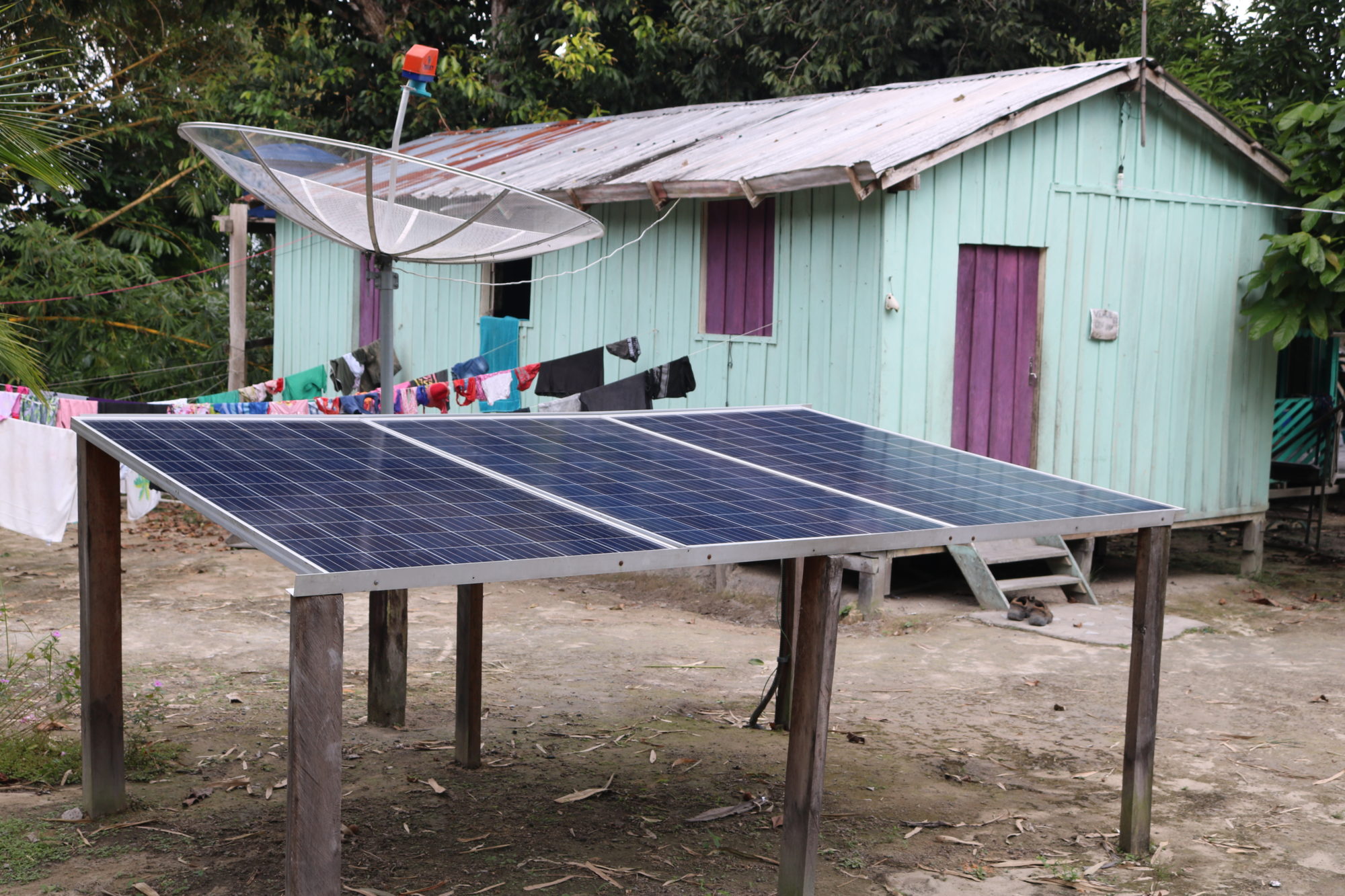
Margarida Ribeiro da Silva, 51, a resident of the Nossa Senhora do Perpétuo Socorro do Rio Arimum community within the Verde Para Sempre reserve, reports paying 37 Reais per month for 24 hours of “clean” solar energy in her home.
It’s better than the old days, she says.
“Before solar power arrived, we had to pay dearly to get practically no electricity… I didn’t have a fridge, we preserved the food in salt to keep it to the next day.”
River dwellers’ health was also affected. Ribeiro da Silva says that since solar panels began came to the communities, cases of hypertension and diarrhoea have dropped. Now, food and drinking water is stored correctly.
Clothes are machine-washed too, which cuts river pollution, and children can study at night. Beyond this, residents now feel connected to the world.
“We can communicate with other communities through the internet,” says Mallet, chief of the Resex. “Before, we were isolated.”


